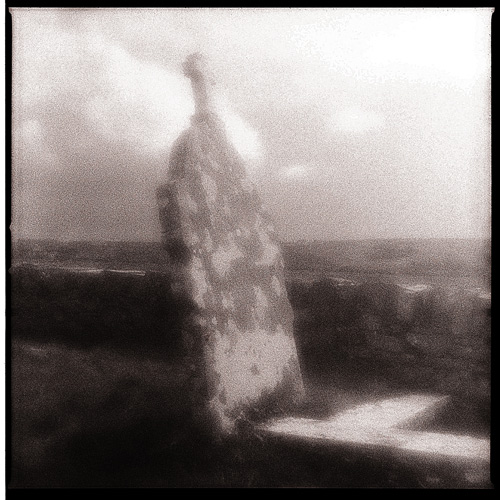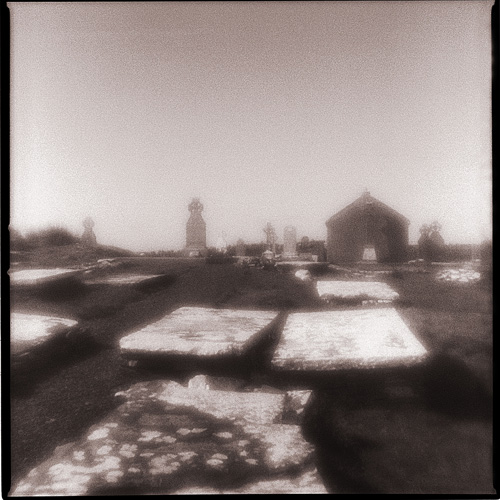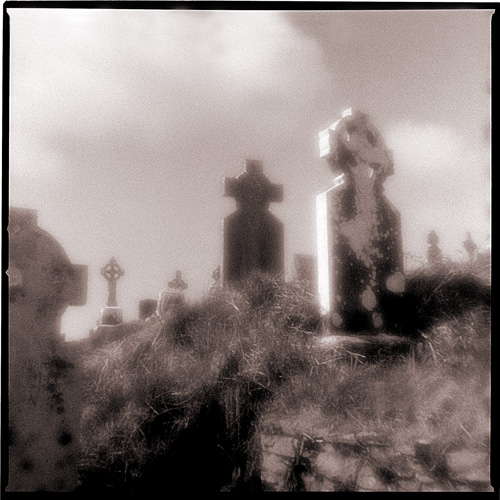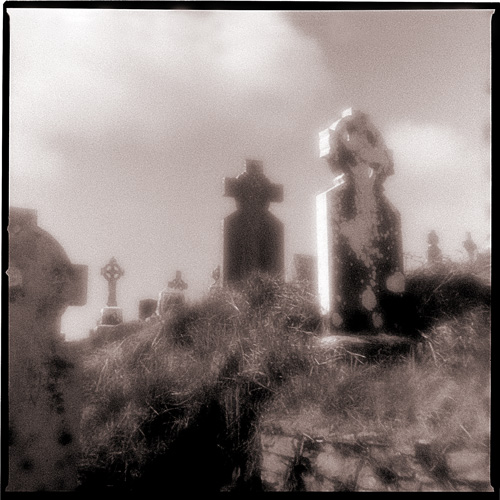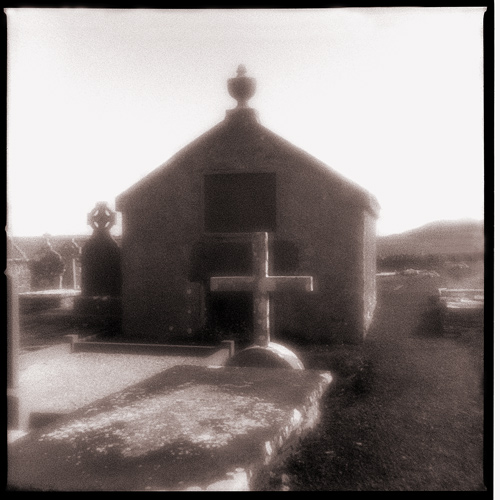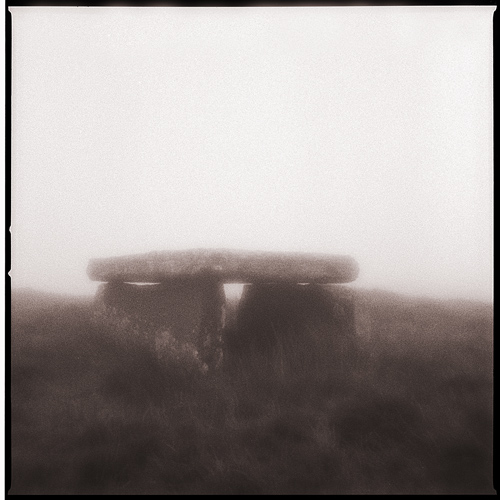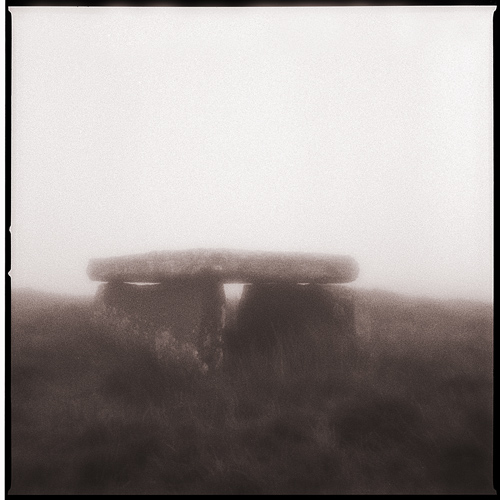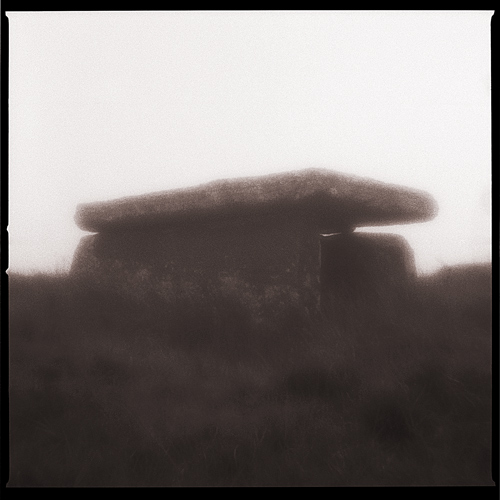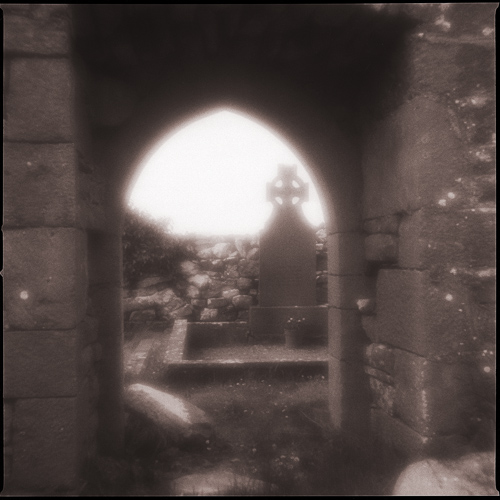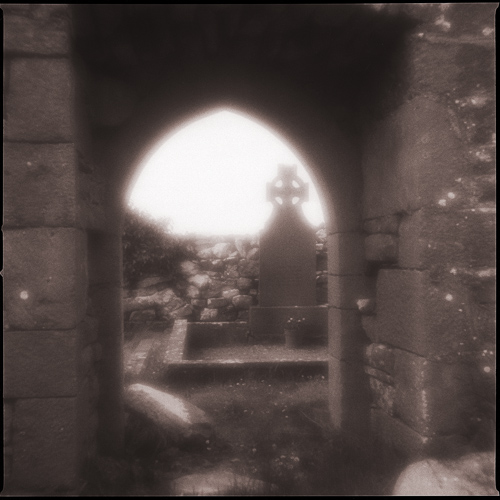Running alongside my 'Safe Havens' project on Irish Harbours I also am looking at the way we in Ireland have treated our dead down through the centuries in a study on burial grounds in County Clare on the west coast.
The project will be lengthy as it involves not only looking at modern burial grounds and the re-introduction of crematoria but also the use of Dolmens, Passage Graves, Megalithic Tombs, and other places where some 3000-5,000 years ago the ashes of the dead were placed to ensure a favourable after-life.
What I intend to do is to place various examples here on this thread as the project progresses so that it keeps me on my toes and also will let Hasselblad Forum members have a preview of how the project is progressing.
I started taking pics on 8th April 2010 in a few of the older burial ground in the Miltown Malbay / Lahinch area.
First off... the pic below is of a leaning headstone in Kilfarboy Burial Ground.
The project will be lengthy as it involves not only looking at modern burial grounds and the re-introduction of crematoria but also the use of Dolmens, Passage Graves, Megalithic Tombs, and other places where some 3000-5,000 years ago the ashes of the dead were placed to ensure a favourable after-life.
What I intend to do is to place various examples here on this thread as the project progresses so that it keeps me on my toes and also will let Hasselblad Forum members have a preview of how the project is progressing.
I started taking pics on 8th April 2010 in a few of the older burial ground in the Miltown Malbay / Lahinch area.
First off... the pic below is of a leaning headstone in Kilfarboy Burial Ground.
